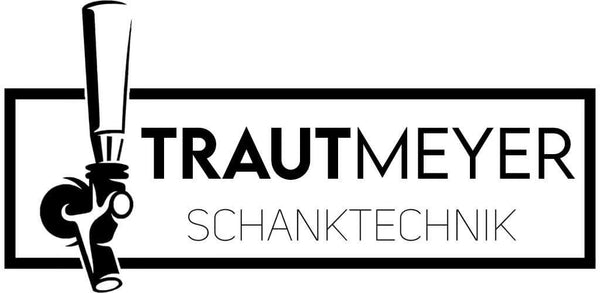What different types of taps are there?
Share
Taps play a crucial role in beer dispensing and significantly determine the quality and consistency of the drafted beverage. Depending on the application and requirements, there are different types of taps that differ in their functionality, handling, and technology.
1. Standard tap:
The classic tap is the most commonly used in the restaurant industry. It offers ease of use and allows beer to be drawn from the keg by opening and closing a lever. Standard taps are robust and durable, suitable for regular dispensing, and easy to clean.
2. Compensator tap:
A compensator tap features a special technology for controlling the flow. Inside, there's an adjusting screw that allows you to regulate the resistance. This prevents excessive foaming of the beer and ensures precise dosing. Compensator taps are particularly suitable for dispensing highly carbonated or delicate beer varieties.
3. Non-return tap:
With a non-return tap, the beer is automatically flushed back from the tap after each dispensing, ensuring no residue remains in the line. This increases hygiene and prevents the beer from aging or becoming contaminated in the tap. Non-return taps are often used in the restaurant industry to ensure beer quality.
4. Dry cooling tap:
Dry-cool taps are connected directly to dry coolers and allow beer to be cooled without a water bath. The beer is piped through chilled lines and cooled directly at the tap. This type of tap is often used in mobile dispensing systems or at events because it can be quickly set up.
5. Dispensing column tap:
Integrated taps are an integral part of bar or countertop systems. They protrude visually from the counter and are often used in bars or pubs. These taps are available in various designs and can simultaneously handle multiple lines for different beer styles.
6. Self-closing tap:
A self-closing tap closes automatically as soon as the lever is released. This prevents unnecessary dripping and ensures economical dispensing. It is particularly suitable for self-service areas or dispensing systems with high dispensing volumes.
7. Nostalgia tap:
Vintage taps are characterized by their classic design and often high-quality materials such as brass. They are frequently used in traditional breweries, beer gardens, or as a visual highlight in bars. Despite their historic appearance, they feature modern dispensing technology.
8. Ball valve tap:
A ball valve tap has a ball inside that regulates the flow through a rotating movement. These taps are very robust and are often used in large dispensing systems or in industrial operations where a high flow rate is required.
9. Tap with filling tube (pilsner tap):
This special type of tap is often used for pilsner. It has a filling tube that reaches deep into the glass and slowly pours the beer from the bottom to the top. This creates a dense, stable head.
Choosing the right tap depends on the type of beer, the frequency of serving, and individual requirements. In the hospitality industry and at events, choosing the right tap is crucial to ensure optimal dispensing and consistently high beer quality.
